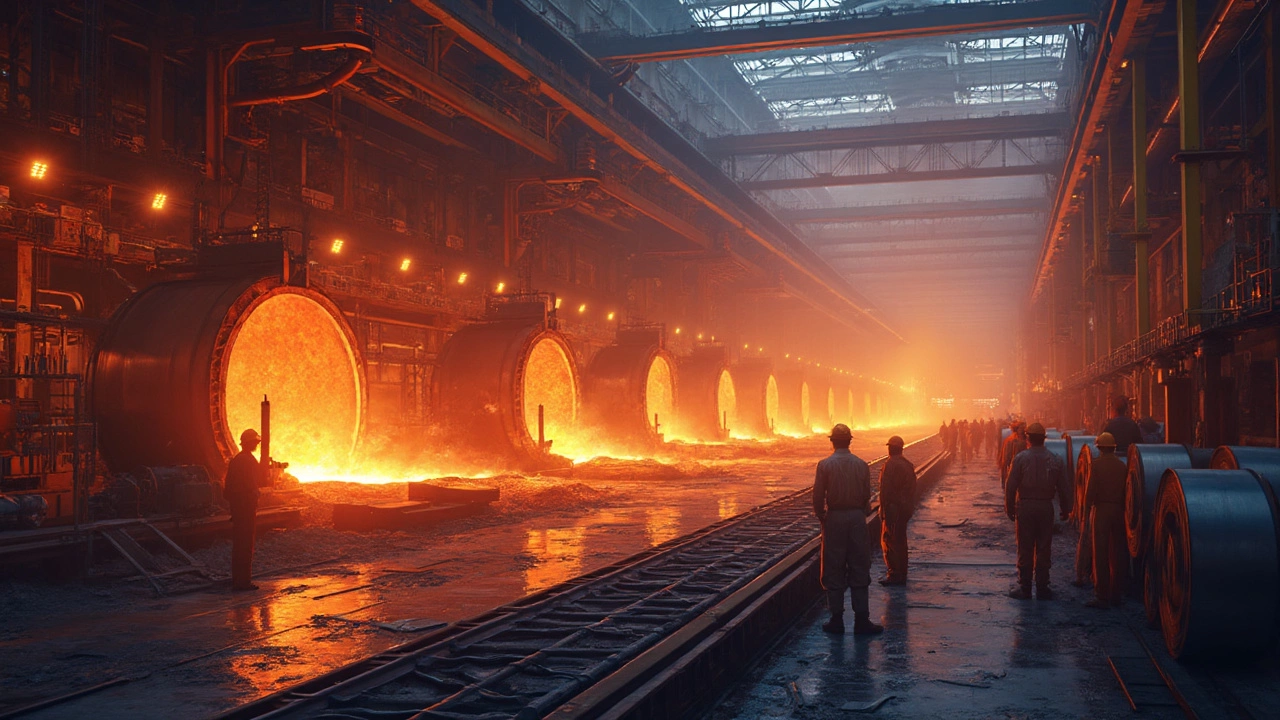- Asia's Largest Earth Moving Equipment Manufacturer: The Big Player in India May 7, 2025
- Discovering the Priciest Wood for Indian Furniture Feb 3, 2025
- Are Any Cars Made in China Sold in the US? Oct 30, 2025
- How Much Do I Need to Start a Small Scale Manufacturing Business? Jun 4, 2025
- Which Country Leads the Electronics Industry? A 2025 Comparative Guide Oct 9, 2025
Steel Giants: Who They Are and Why They Matter
When you hear the word "steel," you probably picture massive plants, roaring furnaces, and endless coils of metal. Behind that image are a handful of companies that dominate the market, set prices, and drive innovation. These are the steel giants – the firms that supply everything from skyscraper frames to the tiniest car parts.
Knowing the major players helps you understand price swings, supply chain risks, and the future of manufacturing. Whether you’re a supplier, investor, or just curious about where the metal in your bike frame comes from, the basics are worth a quick look.
Top Global Steel Producers
At the top of the list sits ArcelorMittal, a multinational that operates in more than 60 countries. Their sheer volume gives them a strong voice in setting industry standards and pushing new technologies like low‑carbon steelmaking.
China’s Baosteel Group follows closely, backed by the country’s massive domestic demand and government support. Baosteel’s rapid expansion has made China the world’s biggest steel exporter, shaping global trade flows.
India’s Tata Steel rounds out the trio of leaders that most readers recognize. Tata’s focus on sustainable practices and high‑strength grades has earned it a solid reputation in both domestic and overseas markets.
Why These Giants Influence Everything Else
Scale matters. A single steel giant can produce enough metal to build dozens of stadiums in a year. That production power lets them negotiate better raw‑material contracts, keep costs low, and invest in advanced equipment.
Innovation is another driver. Many giants are trialing hydrogen‑based reduction processes that cut CO₂ emissions dramatically. If they get it right, the whole industry could shift toward greener production, affecting everything from car manufacturers to construction firms.
Lastly, market signals from these firms often set the tone for smaller players. When a giant ramps up capacity, prices can dip, squeezing margins for midsize mills. Conversely, a slowdown can cause price spikes that ripple through supply chains.
For anyone watching the manufacturing scene, keeping tabs on the steel giants is a shortcut to spotting larger trends. Their annual reports, production forecasts, and sustainability pledges are publicly available and give a clear sense of where the industry is heading.
In short, the steel giants are more than just big factories – they’re the pulse of modern manufacturing. Understanding who they are, how they operate, and what they’re planning next gives you a practical edge, whether you’re buying steel, investing, or planning a new project that relies on metal.
King of Steel: Who Reigns Supreme in Steel Manufacturing?
- Aarav Sekhar
- Mar 10, 2025
Steel is the backbone of global infrastructure, powering everything from skyscrapers to automobiles. But who's leading this massive industry? This article delves into the key players in the steel manufacturing world, exploring their dominance, influence, and innovation. Uncover fascinating facts about production techniques and market strategies that set these giants apart. Learn about the environmental challenges they face and the technological advances shaping the future of steel.
